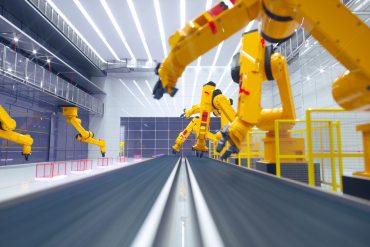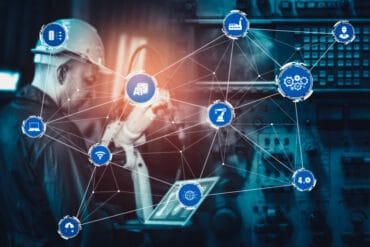
Stanley Black & Decker’s new service optimizes equipment and prevents costly downtime at dusty mega-sites.
The large machines that tear up old buildings or build new ones – cranes and bulldozers, for example – are made to take a beating. Now, there’s a way to track how much punishment they’re taking, and address breakdowns before they happen.
Stanley Black & Decker recently released an IoT-driven real-time analytics platform, called Insite, that gathers data from its hydraulic attachments to these large machines, enabling managers to keep tabs on performance and uptime. InSite, for example, is intended to measure bore and rod pressure, temperature, GPS location and acceleration. Information is delivered to managers on mobile apps. In addition, Stanley Black & Decker now offers a service to provide monitoring and remediation.
That’s the word from Aaron Brown, senior engineering manager of advanced innovation at Stanley Black & Decker. Speaking at 2019 IoT World in Santa Clara, CA, Brown described how his company is leveraging customer data. “These are tools that build the world,” he said. “Customers typically use our applications for things like demolishing buildings, and nuclear power plants, work on military sites, or building sports stadiums.”
The environment the company’s tools operate in is “brutal,” he explains. “This equipment requires a significant amount of maintenance. And downtime costs the industry $2,000 dollars an hour. These machines are very productive, but soon as they stop working, they cost the customers significant amounts of money. “
“We saw an opportunity here to drive a lot of customer value by capturing data at the point of work,” Brown continues.
See also: How Asset-Heavy Industries Can Bridge the Gap Between Data Collection and PdM
Insite is designed to ensure machine optimization, Brown says. Black & Decker’s attachments “provides the hydraulic energy or power that makes equipment work. If the pressures and flow rates and other aspects of that machine are lagging, the machine either doesn’t perform optimally, or could even be potentially damaged.”
“By helping our customers optimize machine size and efficiency for the first time, they can see at the point of work, and really harness that. They used to look out the window and say, ‘I think its working today, maybe it’s doing eight hours, when in reality, maybe it’s only putting in four hours of productive work.”
Brown’s team develops machine learning models “to classify the activities the machine is performing – data at the point of work.” For the first time, users “have insights into how much time their machines spend cutting and moving doing productive activities, versus just sitting idle and moving around the yard,” he says. “We allow them to subdivide that data into intervals so they can track different jobs, different environments, seasonality or even personalities.” Configuration problems or maintenance issues can be detected without showing.”
Brown illustrates a case with a demolition customer. “[They] had a machine set up, everything looked fantastic, all good to go. So they took the machine out to the job site they were demolishing a building. About four hours into the job, there was an issue with the machine pressure. The customer didn’t even realize what happened. We got the alert from the Cumulosity streaming engine. It turned out to be a simple problem — a simple nut became unscrewed during the operation. It was a really a machine setup problem.”
As in many industries, equipment wear and tear is a fact of life in construction. Services like Stanley Black & Decker’s Insite not only can predict and prevent maintenance-related problems, but optimize operations and efficiency in punishing everyday environments.




























